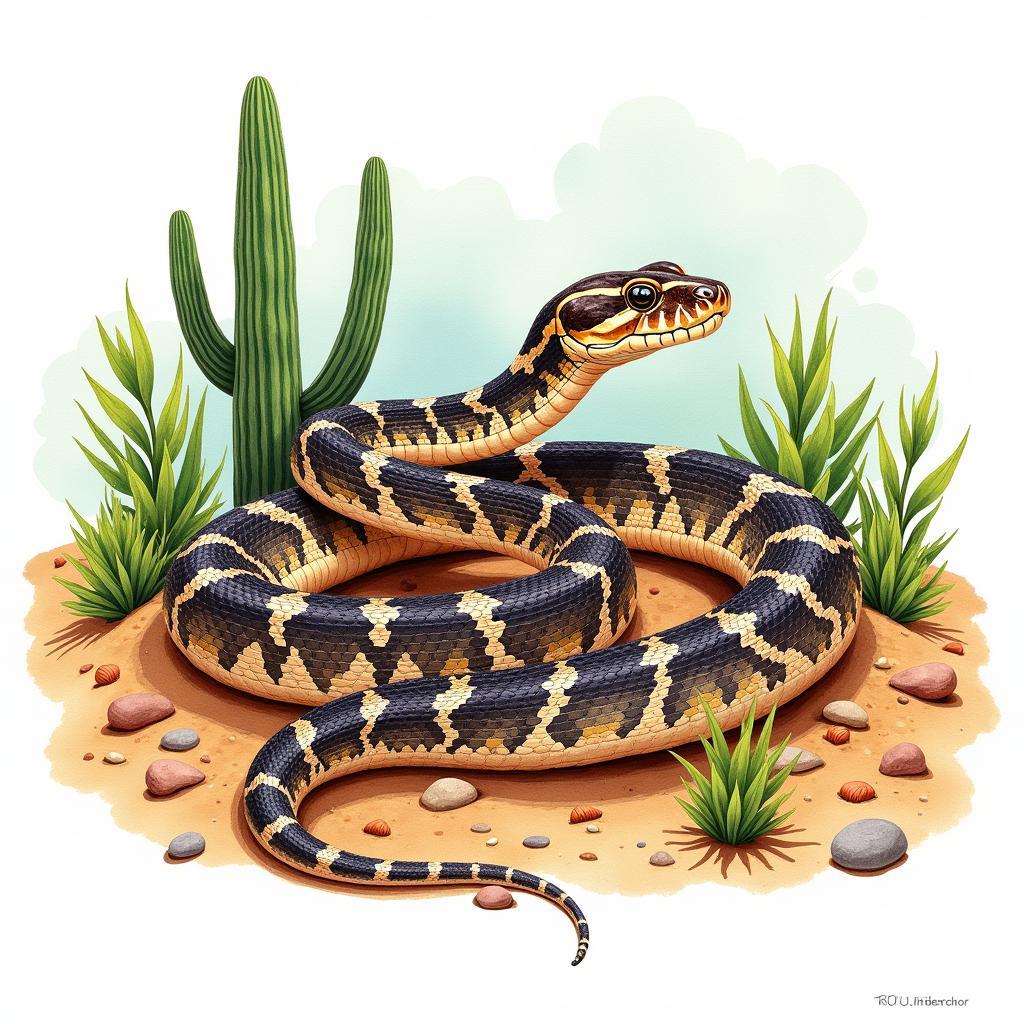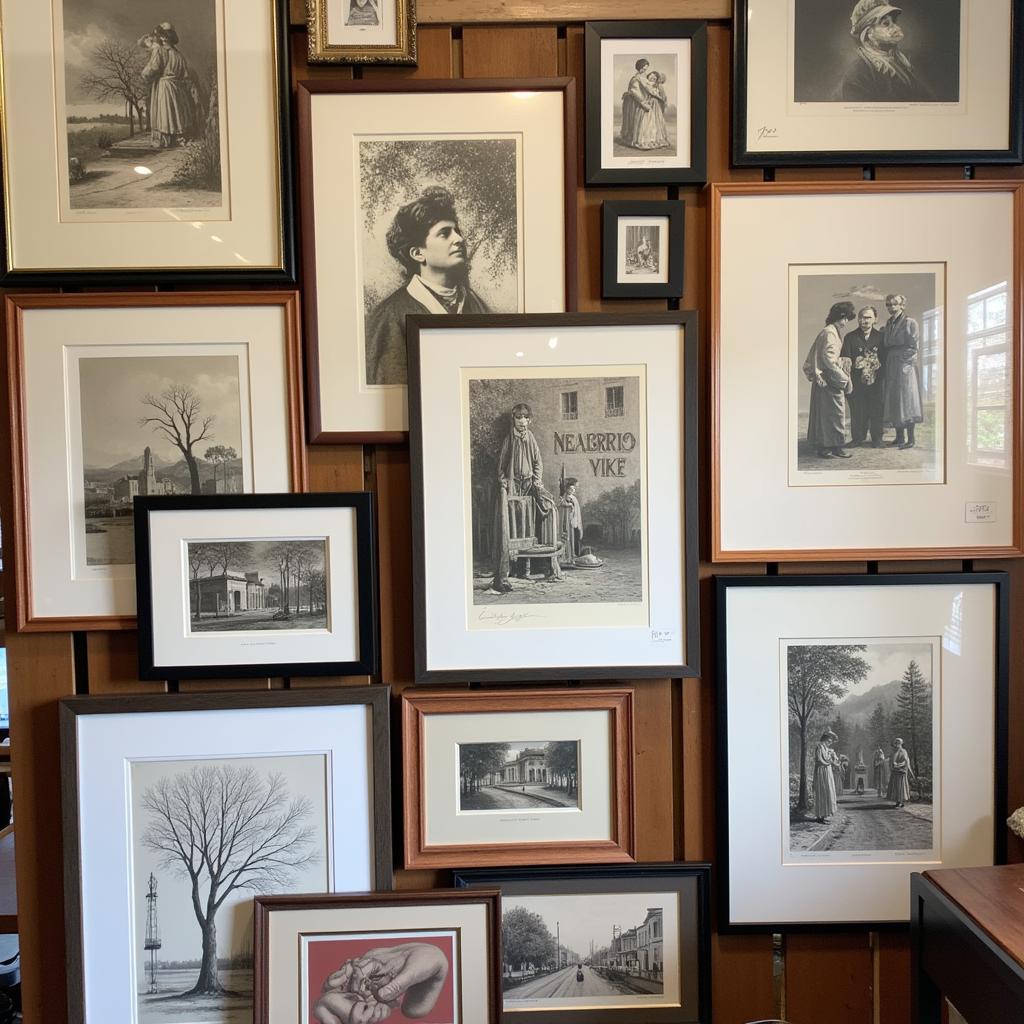Captivating Rattlesnake Art: Exploring the Beauty and Symbolism
Rattlesnake Art has captivated artists and art enthusiasts for centuries, showcasing the reptile’s striking beauty and rich symbolism. From ancient petroglyphs to contemporary digital masterpieces, the rattlesnake’s distinctive form and potent presence have inspired a diverse range of artistic expressions. This article delves into the fascinating world of rattlesnake art, exploring its various forms, cultural significance, and the creative process behind capturing the essence of this iconic creature.
The Allure of Rattlesnake Art: A Historical Perspective
The depiction of rattlesnakes in art dates back millennia, often intertwined with spiritual beliefs and cultural narratives. Native American cultures, particularly in the Southwest, hold the rattlesnake in high regard, viewing it as a symbol of power, healing, and transformation. These beliefs are reflected in intricate pottery designs, woven textiles, and ceremonial artifacts adorned with stylized rattlesnake motifs. Early American folk art also features rattlesnake imagery, often depicted in a protective or symbolic role.
Modern Interpretations of Rattlesnake Art
Contemporary artists continue to draw inspiration from the rattlesnake, pushing the boundaries of creative expression. From hyperrealistic paintings that capture every scale and rattle to abstract sculptures that evoke the snake’s sinuous movement, the rattlesnake remains a compelling subject. Many artists incorporate mixed media and unconventional materials, further enhancing the visual impact and symbolic depth of their work.
What Makes Rattlesnake Art so Unique?
The rattlesnake’s unique characteristics lend themselves well to artistic interpretation. Its distinctive diamond-shaped head, intricate scale patterns, and the iconic rattle all offer compelling visual elements. The snake’s symbolic meanings, ranging from danger and fear to healing and rebirth, add another layer of complexity and intrigue to the artwork.
Creating Your Own Rattlesnake Art: Tips and Techniques
Whether you’re a seasoned artist or just starting out, capturing the essence of a rattlesnake in your art can be a rewarding experience. Careful observation is key. Study the rattlesnake’s anatomy, movements, and natural habitat to gain a deeper understanding of its form and character. Experiment with different mediums and techniques to find the best way to express your artistic vision.
- Drawing: Use pencils or charcoal to create detailed sketches, focusing on the snake’s scales, eyes, and rattle.
- Painting: Explore the vibrant colors and patterns of the rattlesnake using acrylics, watercolors, or oils.
- Sculpting: Clay, wood, or metal can be used to create three-dimensional representations of the rattlesnake.
“When depicting a rattlesnake,” says renowned wildlife artist, Amelia Stone, “it’s essential to capture the intensity in its eyes. That’s where the true power of the creature lies.”
 Vibrant rattlesnake watercolor painting
Vibrant rattlesnake watercolor painting
Conclusion: The Enduring Power of Rattlesnake Art
From ancient rock art to modern galleries, rattlesnake art continues to fascinate and inspire. The snake’s striking beauty and potent symbolism resonate with artists and viewers alike, offering a powerful connection to the natural world and the rich tapestry of human culture. Whether you’re drawn to its aesthetic appeal or its symbolic significance, exploring rattlesnake art is a journey into a world of captivating creativity.
FAQ
- What does rattlesnake art symbolize? Rattlesnake art can symbolize power, healing, transformation, danger, and rebirth, depending on cultural context.
- Where can I find rattlesnake art? Rattlesnake art can be found in museums, galleries, online marketplaces, and directly from artists.
- What mediums are commonly used in rattlesnake art? Common mediums include painting, drawing, sculpture, pottery, and textiles.
- How can I learn to draw a rattlesnake? Practice observing real rattlesnakes or photographs, and focus on capturing the unique details of their anatomy.
- Are there any ethical considerations regarding rattlesnake art? Yes, it’s important to support artists who create their work ethically and avoid harming rattlesnakes in the process.
- What are some famous examples of rattlesnake art? Rattlesnake imagery features prominently in many Native American cultures, and also in some early American folk art traditions.
- How can I incorporate rattlesnake symbolism into my own art? Research the different meanings associated with rattlesnakes and find ways to express those concepts visually.
Need further assistance? Contact us at Phone: 02462573573, Email: [email protected] or visit us at Savico Megamall, 7-9 Đ. Nguyễn Văn Linh, Gia Thụy, Long Biên, Hà Nội 10000, Việt Nam. We have a 24/7 customer support team.



